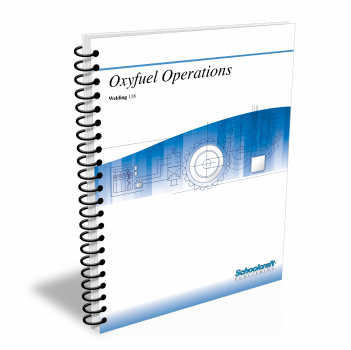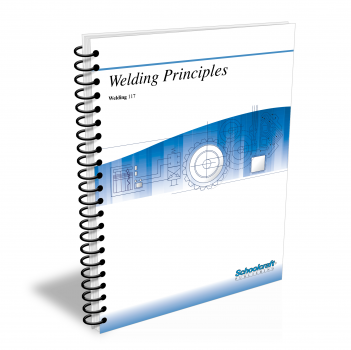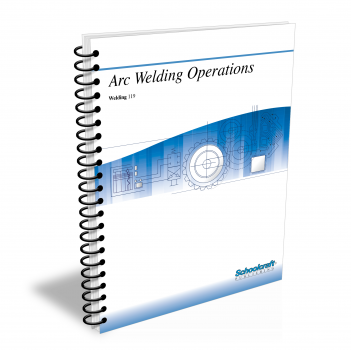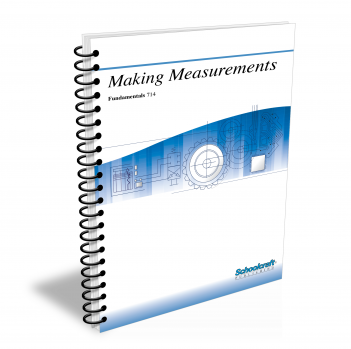Oxyfuel Operations

Course Number: 118
The Oxyfuel Operations textbook covers the welding of ferrous and nonferrous metals. It describes oxygen cutting as well as brazing, soldering, and surfacing techniques.
Does your curriculum require additional topics not included in this textbook? Build a customized version of the Oxyfuel Operations textbook below.
Recommended Contact Hours – 8
Preview a Chapter
Available Supporting Material
- Table of Contents
- Exam Copies
- Suggested Titles
Table of Contents
Chapter 1: Welding Ferrous Metals
Topics: Fusion welding; Fluxes; Flame characteristics; Temperature control; Welding common mild steels, stainless steel, cast iron, and wrought iron
Learning Objectives:
- Explain how oxyfuel welding joins metals and how it differs from arc welding.
- Explain how braze welding and torch brazing are different from oxyfuel welding and from each other.
- Discuss the purposes for using flux and characteristics that make a flux suitable for an application.
- Compare the appearance and general uses of the carburizing flame, neutral flame, and oxidizing flame.
- Explain why preheating and postheating are used.
- List important considerations in welding common mild steels, stainless steel, and cast and wrought iron.
Chapter 2: Welding Nonferrous Metals
Topics: Joint preparation; Welding aluminum, copper, brass, bronze, lead, nickel, and magnesium
Learning Objectives:
- Discuss characteristics of aluminum that are important in welding.
- Explain how to use aluminum alloy designations.
- Describe procedures used in aluminum joint preparation and in aluminum welding.
- Discuss characteristics of copper and copper alloys that are important in welding.
- Discuss procedures for welding copper, brass, and bronze.
- Discuss procedures for welding lead, nickel, and magnesium.
- Summarize general standard procedures for making optimum welds.
Chapter 3: Oxygen Cutting
Topics: Oxygen cutting process, torch, and tips; Cutting safety; Cutting bevels; Piercing holes; Cutting circles; Removing rivets; Gouging; Scarfing
Learning Objectives:
- Explain the similarities and differences between oxyfuel cutting and oxyfuel welding.
- Describe the equipment and safety precautions necessary for torch cutting and list standard steps in the torch cutting operation.
- Describe special equipment or methods used in cutting bevels, piercing holes, cutting circles, and cutting away rivets.
- Explain why gouging, scarfing, and washing are used.
- Explain methods used on metals that are otherwise difficult to cut.
Chapter 4: Brazing and Soldering
Topics: Filler alloys and fluxes; Brazing and braze welding cast, malleable iron, aluminum, and steel; Safety; Soldering; Kinds of solder; Soldering tools
Learning Objectives:
- Compare and contrast brazing, braze welding, and oxyfuel fusion welding.
- Describe the materials and procedures used in brazing and braze welding.
- Explain important special considerations in braze welding cast and malleable iron, brazing aluminum, and brazing stainless steel.
- List the safety precautions necessary for brazing and braze welding operations.
- Explain how soldering differs from brazing and describe the materials and procedures used in soldering.
Chapter 5: Surfacing Techniques
Topics: Thermal spraying; Hard facing; Flame spraying; Surfacing materials; Preparation; Safety
Learning Objectives:
- Define hard face welding and thermal spraying as used for surfacing purposes and discuss general uses of each.
- Discuss advantages and disadvantages of detonation-gun, plasma, and electric arc thermal spraying and explain how each is done.
- Describe the processes of torch hard facing and flame spraying.
- Name several common surfacing materials and discuss one or more characteristics of each.
- List the steps, including those for surface preparation, in repairing a shaft by means of thermal spraying.
- Discuss the safety precautions necessary to prevent or minimize hazards from surfacing processes.
Request Exam Copies
Exam Copies
Ready to see a copy of our textbooks? After selecting which textbooks you’d like to review for your course, you can submit your request by either logging in or creating an account so we know where to ship your exam copies. A representative from Schoolcraft will contact you to confirm and finish processing your request.
Exam copies are always free and yours to keep.
Selected Exam Copies
none selected
* Maximum of five copies can be ordered




